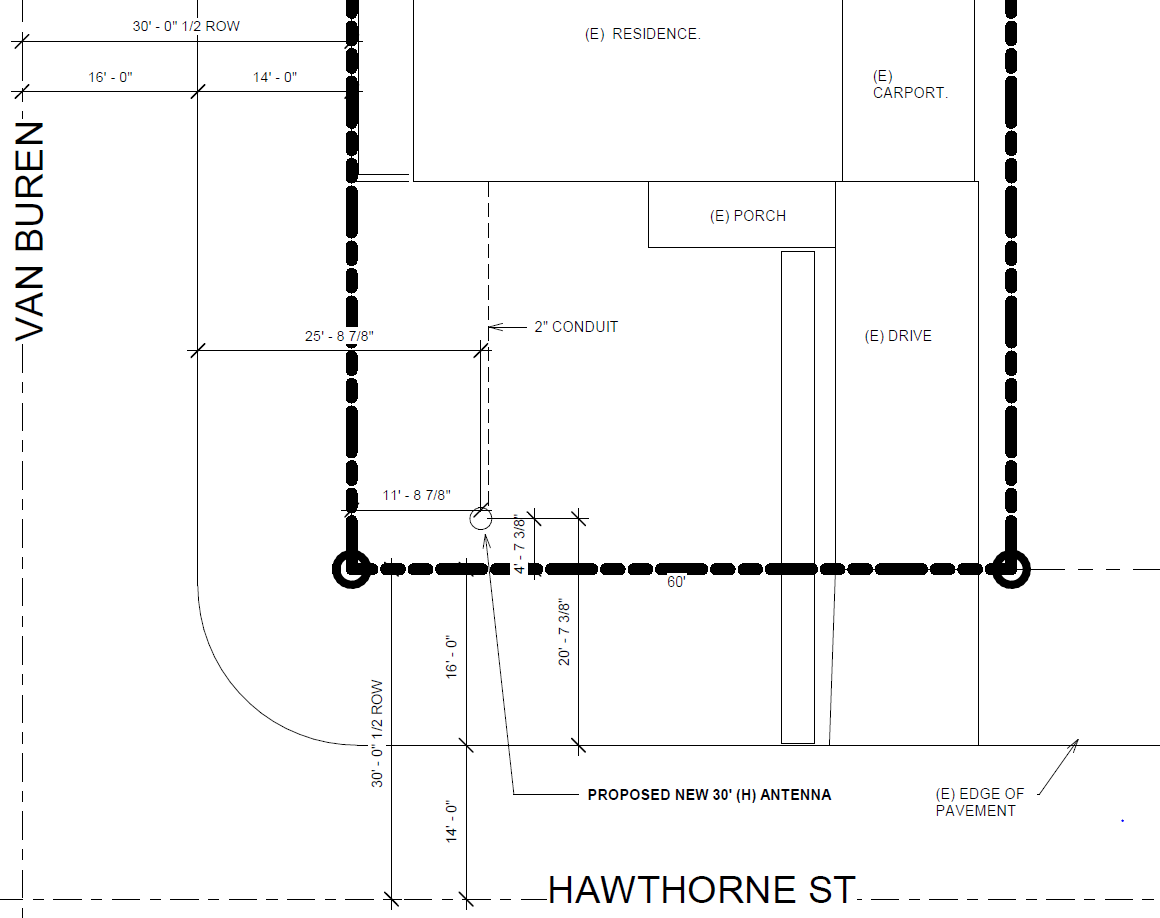
The FCC sets RF exposure limits for "controlled" and "uncontrolled" environments. The amateur radio station itself is considered a controlled environment while outside the station (such as in a neighbor's home) is considred unconctrolled. These limits are also called "occupational" and "public." The limits are specified in mw/cm2 (power density) and vary by frequency based on how that frequency is absorbed by a human body.
The American Radio Relay League provides an RF Exposure Calculator to simplify calculations of the required distance from the antenna for both controlled and uncontrolled environments. Since the exposure limits are based on an average over a six minute period, the duty cycle of transmission as well as the crest factor (peak to RMS ratio) is considered in determining the limits. The other factors include, of course, the peak power into the antenna, and the antenna gain.
The ARRL calculator provides gains (in dBi) for various types of antennas. The antenna here is a quarter wave vertical on 40 meters, but other lengths (such as half wave on 20 meters), so the gain will vary with the band in use. The gain of a vertical antenna over real ground is quite low at zero degrees from horizontal. However, to be conservative in the calculations, I have used the peak gain (which occurs at a higher elevation angle). ARRL suggests a gain of 1.5 dBi for a quarter wave vertical. This is very close to the 1.12 dBi at 24 degrees calculated by EZNEC PRO 7.0. In the table below, worst case distances for controlled and uncontrolled environments are calculated based on the gain calculated by EZNEC PRO 7.0 for RTTY at 1.5 kW with a 50% transmit duty cycle (3 minutes transmit, 3 minutes receive). In addition, ground reflections were included.
| Band meters | Controlled Distance (ft) | Uncontrolled Distance (ft) |
|---|---|---|
| 160 | 1.7 | 2.5 |
| 80 | 2.0 | 4.5 |
| 60 | 2.7 | 6.1 |
| 40 | 3.5 | 7.8 |
| 30 | 4.6 | 10.3 |
| 20 | 6.2 | 13.8 |
| 17 | 8.4 | 18.7 |
| 15 | 11.6 | 26.0 |
| 12 | 18.7 | 41.9 |
| 10 | 19.7 | 44.1 |
| As shown in the image to the right, the 30 foot vertical antenna is installed 20' - 7 3/8" from the curb of one street, and 25' - 8 7/8" from the curb on another street. The antenna is centered in the area between these two streets, the walkway, and the porch area (an area behind a short wall about 10 feet from the house). The critical distance, therefore, is the approximately 20 feet to the street where non-controlled exposure is possible. Because it is a street with no sidewalk, the amount of time someone may spend on the street nearest to the antenna is likely to be limited. However, for this analysis, we'll assume someone is standing 20 feet from the antenna continuously. |  |
As noted above, the uncontrolled distances for 15, 12, and 10 meters for RTTY, 3 minutes transmit, 3 minutes receive, at 1.5 kW exceeds the 20 feet from the antenna to the street. This can be compensated for through an average power reduction through either reduction of the transmitter power output or use of a mode that has a lower duty cycle (such as CW or SSB).
| Band | TPO with 100% Duty Cycle (RTTY) | TPO with 40% Duty Cycle (CW) | TPO with 20% Duty Cycle (SSB) |
|---|---|---|---|
| 15 | 890 W | 2.2 kW | 4.5 kW |
| 12 | 340 W | 850 W | 1.7 kW |
| 10 | 300 W | 750 W | 1.55 kW |